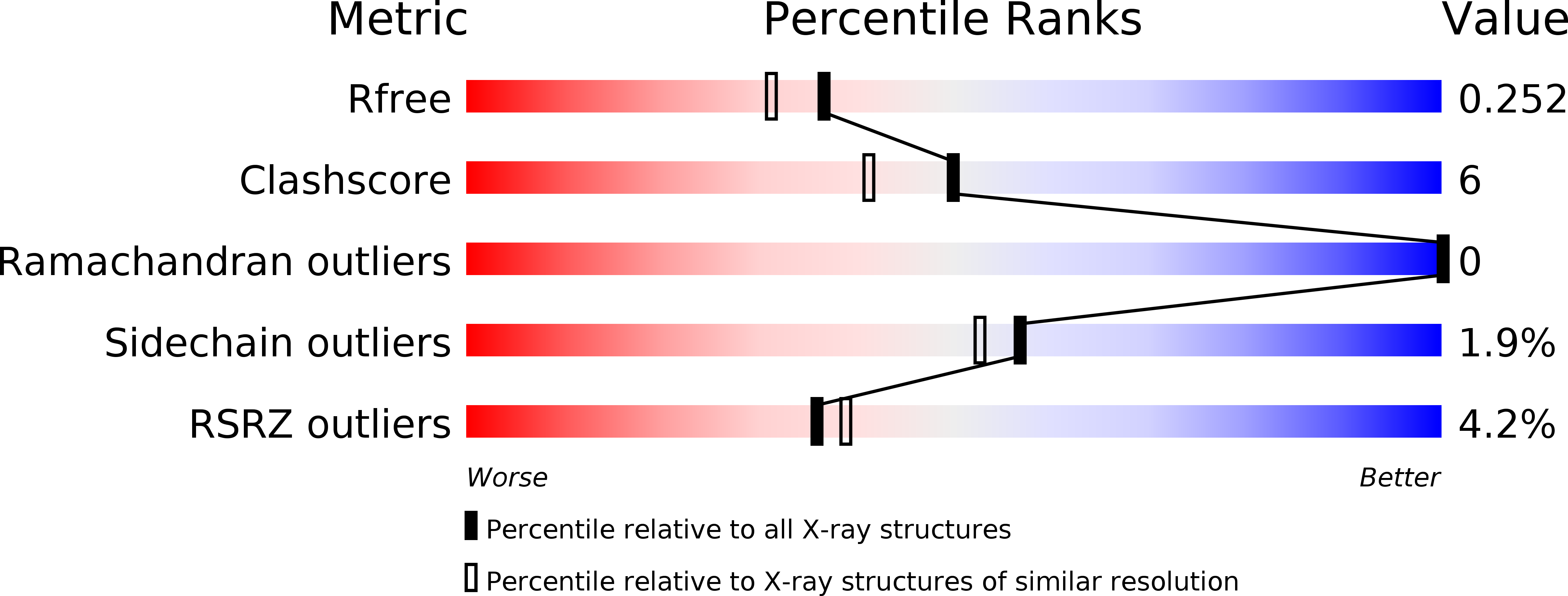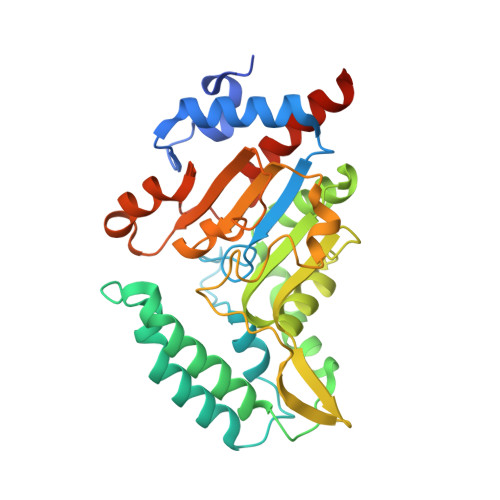Crystal Structures of the Novel Cytosolic 5'-Nucleotidase IIIB Explain Its Preference for m7GMP
Monecke, T., Buschmann, J., Neumann, P., Wahle, E., Ficner, R.(2014) PLoS One 9: e90915-e90915
- PubMed: 24603684
- DOI: https://doi.org/10.1371/journal.pone.0090915
- Primary Citation of Related Structures:
4NV0, 4NWI - PubMed Abstract:
5'-nucleotidases catalyze the hydrolytic dephosphorylation of nucleoside monophosphates. As catabolic enzymes they contribute significantly to the regulation of cellular nucleotide levels; misregulation of nucleotide metabolism and nucleotidase deficiencies are associated with a number of diseases. The seven human 5'-nucleotidases differ with respect to substrate specificity and cellular localization. Recently, the novel cytosolic 5'-nucleotidase III-like protein, or cN-IIIB, has been characterized in human and Drosophila. cN-IIIB exhibits a strong substrate preference for the modified nucleotide 7-methylguanosine monophosphate but the structural reason for this preference was unknown. Here, we present crystal structures of cN-IIIB from Drosophila melanogaster bound to the reaction products 7-methylguanosine or cytidine. The structural data reveal that the cytosine- and 7-methylguanine moieties of the products are stacked between two aromatic residues in a coplanar but off-centered position. 7-methylguanosine is specifically bound through ¦Ð-¦Ð interactions and distinguished from unmodified guanosine by additional cation-¦Ð coulomb interactions between the aromatic side chains and the positively charged 7-methylguanine. Notably, the base is further stabilized by T-shaped edge-to-face stacking of an additional tryptophan packing perpendicularly against the purine ring and forming, together with the other aromates, an aromatic slot. The structural data in combination with site-directed mutagenesis experiments reveal the molecular basis for the broad substrate specificity of cN-IIIB but also explain the substrate preference for 7-methylguanosine monophosphate. Analyzing the substrate specificities of cN-IIIB and the main pyrimidine 5'-nucleotidase cN-IIIA by mutagenesis studies, we show that cN-IIIA dephosphorylates the purine m7GMP as well, hence redefining its substrate spectrum. Docking calculations with cN-IIIA and m7GMP as well as biochemical data reveal that Asn69 does not generally exclude the turnover of purine substrates thus correcting previous suggestions.
Organizational Affiliation:
Abteilung f¨¹r Molekulare Strukturbiologie, Institut f¨¹r Mikrobiologie und Genetik, G?ttinger Zentrum f¨¹r Molekulare Biowissenschaften, Georg-August-Universit?t G?ttingen, G?ttingen, Germany.

















